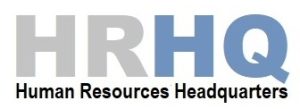
by David Barrett, Chief Operating Officer of global assessment specialist cut-e.
Employers are not allowed to apply any requirement or condition that disadvantages job candidates or makes them ineligible for a role, without a justifiable reason. Otherwise it constitutes discrimination. That’s why today’s recruiters are taking practical steps to implement a fair selection process, which gives every applicant an equal chance of success.
For example, a company employing technical apprentices may discover that their best apprentices have strong analytical skills. Maths and physics students usually have strong analytical skills, so the company may insist that future candidates have good grades in these subjects. This is unfair. Analytical ability may be desirable and job-relevant but it’s only one characteristic of a good apprentice. Other desirable aspects might include mechanical or technical knowledge, practical experience and social skills. But none of these are included in the criterion (school grades) that is used to screen the candidates.
This is an example of an employment decision which has an ‘adverse impact’. If your applicant pool is 50% female and 50% male, you should expect to see comparable percentages being progressed at each stage of your selection process and then receiving job offers. If this isn’t the case, your selection process may be having an adverse impact on your candidates.
Bias is another factor to be avoided in recruitment. This means treating certain groups unfairly. A biased test will predict job performance differently for different groups of people. This means that individuals from different ethnic or socio-economic groups – who may actually have the same ability or skill set – will score differently on a biased test. For example, a test which asks about playing polo might be biased against candidates from lower socio-economic groups.
The following steps can help to ensure that your testing process is fair for everyone:
1. Conduct a thorough and objective job analysis to determine the specific behaviours, skills, knowledge and characteristics that are essential for doing the job well. Then identify job-related selection criteria that are relevant to the requirements of the role.
2. Use valid and justifiable assessments that measure your selection criteria. Groups of test takers must not be disadvantaged in their access to your assessments. Test-taking conditions should be the same for all candidates. For example, tests must work equally well on different mobile devices. Testing should simply help you to sift out applicants who fall below a certain threshold and who therefore do not fit your selection criteria.
3. Ensure your job advertisements don’t contain images or descriptions that might alienate potential applicants.
4. Train hiring managers in equal opportunities, diversity, employment law, interview skills and avoiding unconscious bias. Ensure they understand your selection criteria and that they don’t ask questions about aspects such as a physical handicap, pregnancy, sexual identity, religious beliefs, world views, age or ethnicity, unless the question is directly related to the job on offer.
5. Conduct consistent job interviews and assessment centres. Probe only for the desired attitudes and behaviours. Check that interviewers and assessors are not simply recruiting people from similar backgrounds, or with similar experiences, to themselves.
6. When rejecting candidates, give reasons that are based purely on the job requirements.
7. Monitor candidate aspects such as gender, ethnicity and age at each stage of your selection process to check for adverse impact. Apply the ‘four-fifths rule’. This states that the success rate for members of any particular group should not be less than 80 percent of any other group’s success rate.
8. Conduct validation research to confirm that the people who perform well in your assessments go on to perform well in the role. Keep documented evidence at each stage, to help you if a legal challenge arises.
By using only criteria which impact on job performance, fair testing will help you to identify the best candidates for your roles and will bring equality and inclusion into your recruitment process. This way, you can not only recruit without bias and adverse impact, you can improve the performance of your organisation and enhance your employer brand.










